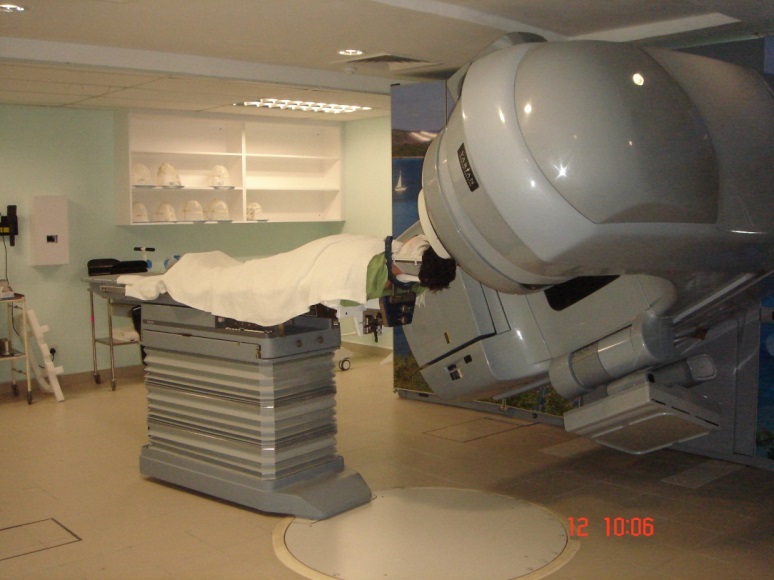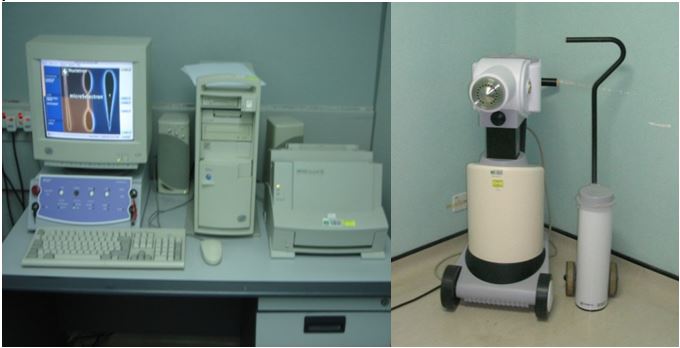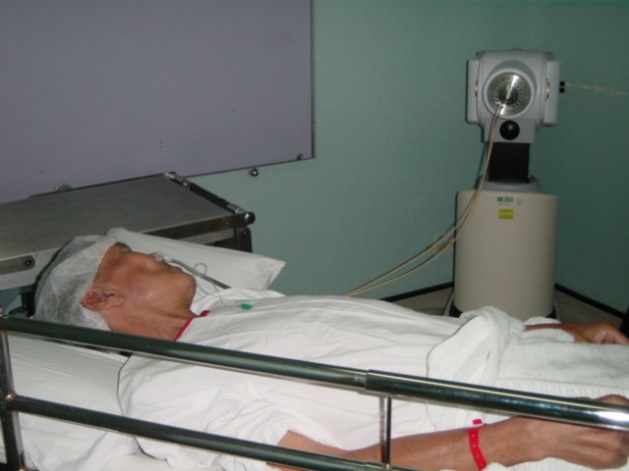If you are afflicted with cancer, you would most probably be referred to a radiotherapy centre for treatment.
What Is Radiotherapy?
Radiotherapy (RT) is a treatment modality used in the management of cancer. This modality uses high energy ionizing radiation to kill the cancer cells. The delivery of high doses of radiation to the tumour is intended to cure, control or reduce symptoms of the disease. However, adjacent areas will also receive some of the radiation dose which can result in side-effects.
In cancer management, RT can be given alone or in combination with other modalities as follows:
- Surgery
- Chemotherapy
- Hormone Therapy
How Is Radiotherapy Delivered?
Radiotherapy can be delivered by two methods:
- Teletherapy (External Beam RT- EBRT)
- Brachytherapy (Internal Beam RT- IBRT)
Teletherapy
In the delivery of this treatment method, radiation produced by machines called Linear Accelerators (or equipment that is similar), will be directed to the part of the body being treated.
 |
 |
| Linear Accelerator (Teletherapy Machine) | Patient undergoing Teletherapy |
During treatment, the patient will lie on the treatment couch and several beams of radiation will be directed to the part of the body being treated from various angles as the Linear Accelerator is able to rotate around the patient.
Radiotherapy is given in a number of sessions in accordance to the doctor’s prescription and instructions. As an example, in the treatment for breast cancer, a radiation dose of 5000cGy is given in 25 fractions (times) within a period of five (5) weeks. Treatment prescription differs for various types of cancers and it also depends on the stage of the disease, patient’s physical condition and whether RT is combined with other modalities.
Patients can choose to travel from home or stay in the ward whilst undergoing EBRT.
Brachytherapy
Brachytherapy uses natural radioactive sources. Treatment is delivered by placing the sources, which produces radiation, within cavities, lumen, tissue or on the skin surface of the part of the body being treated.
 |
 |
| High Dose Rate Brachytherapy Machine | Patient undergoing brachytherapy |
The radiation source is administered through a connecting tube which links the machine and special applicators placed within cavities, lumen and tissue. Special moulds are made from wax or other similar materials for the placement of applicators in the use of skin surface application.
Treatment is usually given in 2-4 sessions to achieve the required dose and is given once or twice a week. Brachytherapy is frequently used in the treatment of cervical, uterine and nasopharyngeal cancers and is used in combination with EBRT.
What Is The Objective Of Radiotherapy?
Whichever method is being used, either Teletherapy or Brachytherapy, radiotherapy is given to kill the cancer cells by destroying the DNA (deoxyribonucleic acid) to achieve the following treatment objectives:
- Cure
- Palliation (to control the disease and symptoms)
Side Effects Of Radiotherapy
Similar to other treatments, RT may also cause side effects to patients. This is because the normal cells within the area of treatment will also receive radiation. The side effects likely to develop will depend on the following factors:
- Part of the body being treated.
- Volume of tissue being treated.
- Total dose given.
- Combination of radiotherapy with other modalities such as chemotherapy.
Please refer to the side effects of RT.
The Radiotherapy Team
The radiotherapy team is multi-disciplinary, responsible for the management, treatment and care of the cancer patients.
- Clinical Oncologist and Medical Officer
– Responsible for the overall management, treatment and care of the cancer patients.
- Physicist
– Responsible for quality assurance activities and radiation protection.
– Development of treatment plans and dose calculations (Dosimetry).
- Radiation Therapist (Therapy Radiographer)
– Responsible for treatment planning (simulation) and treatment delivery for the patients.
– Preparation of equipment and daily quality assurance of equipment.
- Nurse
– Responsible for the management and nursing care of patients in the clinic, wards and brachytherapy procedure room.
Radiotherapy Treatment Centres
The Ministry of Health provides radiotherapy services in the following centres:
Institut Kanser Negara, Putrajaya
No 4, Jalan P7, Presint 7, 62250 Putrajaya
Tel. No.: 03-8892 5555
Jabatan Radioterapi dan Onkologi, Hospital Kuala Lumpur
Jalan Pahang, 50586 Kuala Lumpur
Tel. No.: 03-2615 5555
Pusat Rawatan Radioterapi dan Onkologi, Hospital Sultan Ismail
Jalan Persiaran Mutiara Emas Utama, Taman Mount Austin, 81100 Johor Bharu, Johor
Tel. No.: 07-356 5000
Jabatan Radioterapi dan Onkologi, Hospital Umum Sarawak
Jalan Tun Ahmad Zaidi Adruce, 93586 Kuching, Sarawak
Tel. No.: 082-276 662
Jabatan Radioterapi dan Onkologi, Hospital Wanita dan Kanak-kanak, Likas
P.O. Box 187, 88996 Kota Kinabalu, Sabah
Tel. No.: 088-522 600
The Ministry of Education also provides radiotherapy services in the following centres:
- Pusat Perubatan Universiti Malaya, Petaling Jaya, Selangor
- Pusat Perubatan Universiti Kebangsaan Malaysia, Cheras, Kuala Lumpur
- Hospital Universiti Sains Malaysia, Kubang Kerian, Kelantan
There are several private radiotherapy centers available in the country. Please surf the website of the Malaysian Oncological Society (MOS) for further informations.
References
- Griffiths, S. & Short, C. (1994). Radiotherapy: Principles to Practice, Churchill Livingstone
- http://en.wikipedia.org/wiki/Ionizing_radiation
- http://www.mos
| Last Reviewed | : | 23 March 2017 |
| Translator | : | Rubiah binti Mohd Pakeh |
| Accreditor | : | Nafisah binti Hamid |







